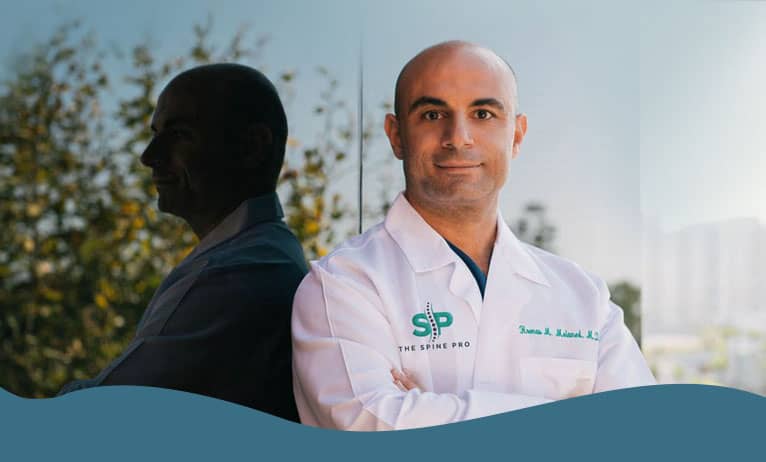Spondylolisthesis vs Spondylosis: What is the Difference?
Spinal conditions can be complex, often presenting with similar symptoms yet differing significantly in their underlying causes and treatments. Two such conditions, spondylolisthesis and spondylosis, are often confused. Let’s take a look at the differences between spondylolisthesis vs. spondylosis. At The Spine Pro, Dr. Hooman Melamed specializes in diagnosing and treating these conditions, ensuring patients receive the most appropriate care.

What is Spondylolisthesis?
Spondylolisthesis is a condition where one vertebra slips forward over the vertebra below it. This slippage can occur due to various reasons, including congenital defects, trauma, or degenerative changes in the spine. Spondylolisthesis is classified into different grades based on the severity of the slippage:
- Grade I: Up to 25% slippage
- Grade II: 26-50% slippage
- Grade III: 51-75% slippage
- Grade IV: 76-100% slippage
- Grade V: Over 100% slippage (also called spondyloptosis)
Symptoms of Spondylolisthesis
- Lower back pain that can radiate to the buttocks and thighs
- Stiffness and reduced flexibility in the lower back
- If the slipped vertebra compresses nerves, it can cause numbness, tingling, or weakness in the legs
- In severe cases, noticeable changes in posture or gait may occur
What is Spondylosis?
Spondylosis refers to the degenerative changes in the spine associated with aging. It is a type of arthritis that affects the spine, leading to the wear and tear of the spinal discs and joints. Spondylosis can occur in different parts of the spine:
- Cervical Spondylosis: Affects the neck region
- Thoracic Spondylosis: Affects the mid-back
- Lumbar Spondylosis: Affects the lower back
Symptoms of Spondylosis
- Chronic pain in the affected region of the spine
- Stiffness and difficulty moving the neck or back
- Similar to spondylolisthesis, nerve compression can cause numbness, tingling, or weakness in the limbs
- Headaches due to nerve irritation
Key Differences: Spondylolisthesis vs Spondylosis
While both conditions involve the spine and can cause similar symptoms, they differ in their causes, nature, and treatment approaches.
Cause
- Spondylolisthesis: Caused by vertebral slippage due to congenital defects, trauma, or degenerative changes.
- Spondylosis: Result of age-related degenerative changes in the spinal discs and joints.
Nature
- Spondylolisthesis: Involves actual movement or slippage of a vertebra.
- Spondylosis: Involves degeneration without vertebral slippage.
Treatment
- Spondylolisthesis: Treatment may include physical therapy, bracing, pain management, and in severe cases, surgery to stabilize the spine.
- Spondylosis: Treatment focuses on pain relief and maintaining mobility through physical therapy, medications, and lifestyle modifications.
Dr. Melamed’s Comprehensive Approach
At The Spine Pro, Dr. Hooman Melamed adopts a holistic and patient-centered approach to diagnosing and treating both spondylolisthesis and spondylosis. His expertise in spinal health ensures that each patient receives a tailored treatment plan designed to alleviate symptoms and improve quality of life.
Getting the Right Diagnosis and Treatment
Understanding the difference between spondylolisthesis vs. spondylosis is the first step toward effective treatment and management. If you’re experiencing back pain or related symptoms, a thorough evaluation by a specialist like Dr. Melamed can provide clarity and guide you to the best treatment options.
Click here to schedule a consultation with Dr. Melamed at The Spine Pro.






